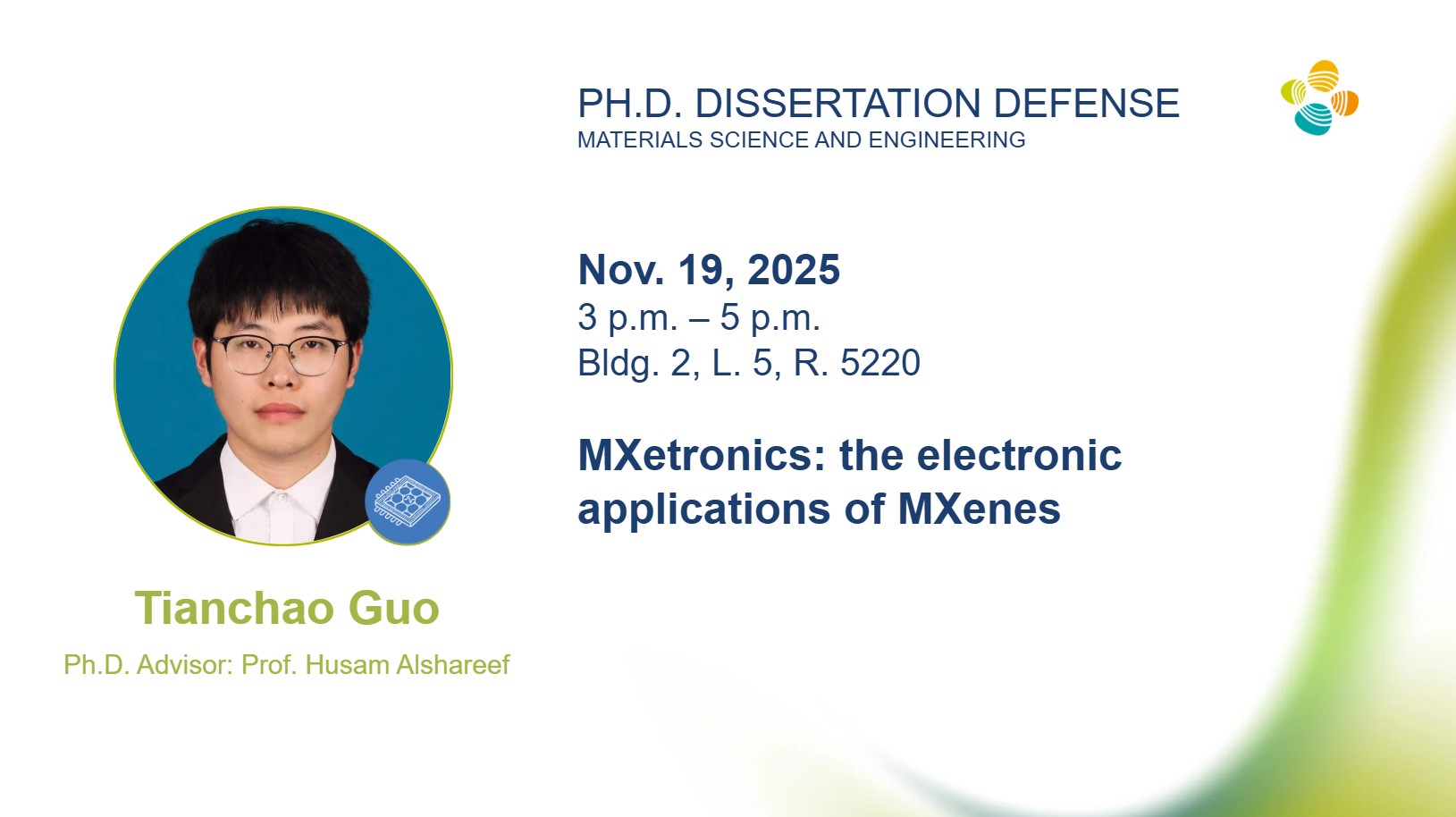Nov 2025
MXetronics: The Electronic Applications of MXenes

Committee Members Information
- Ph.D. Advisor: Professor Husam Alshareef
- Committee Chair: Professor Xixiang Zhang
- External Examiner: Professor Wenzhuo Wu
- Committee Member: Professor Atif Shamim
- Committee Member: Professor Jawaher Almutlaq
Zoom link: https://kaust.zoom.us/j/97683215784?from=addon
Abstract:
MXenes, a rapidly growing family of two-dimensional transition metal carbides and nitrides, have attracted considerable attention owing to their tunable surface chemistry, adjustable work functions, and excellent electronic properties. Nevertheless, their practical integration into device platforms remains challenging, particularly in terms of scalable synthesis, interface engineering, and the realization of low-resistance contacts with semiconductors. Overcoming these barriers is crucial for advancing MXene-based nanoelectronics.
Motivated by these challenges, this dissertation systematically investigates scalable fabrication methods, interfacial contact engineering, and emergent functionalities of MXenes, as outlined in the following chapters. In Chapter 1, we introduce the background of MXenes, summarize the current status and challenges of MXene integration, and define the motivation and scope of this work. In Chapter 2, we develop wafer-scale Ti3C2Tx–MoS2 integrated circuits using a sub-10 nm HfO2/Al2O3 gate dielectric. These devices exhibit high yield and performance uniformity, confirming the compatibility of solution-processed MXene with Cleanroom-scale fabrication. In Chapter 3, we establish an MDC strategy that enables direct deposition of ultrathin MXene (Ti3C2Tx) films on hydrophobic MoS2 without any surface pretreatment. We reveal a unique surface polarization coupling mechanism that ensures robust vdW contact, large-area film continuity, as well as good transistor performance. In Chapter 4, we report a green and scalable method to transfer large-area Ti3C2Tx films onto diverse substrates, including hydrophobic semiconductors. By introducing liquid intercalants (e.g., HI) at the Ti3C2Tx/MoS2 interface, we achieve a high enhancement in current injection, attributed to Fermi level tuning, Schottky barrier reduction, and phase transition confirmed by DFT calculations. In Chapter 5, we investigate the use of multiple MXene compositions—Ti3C2Tx, Nb2CTx, and Mo2CTx—as contacts for p-type 2H-MoTe2 transistors. We identify Nb2CTx as the optimal p-type contact, delivering superior hole mobility, low Schottky barrier height, and excellent uniformity across multiple devices. In Chapter 6, we summarize the overall contributions of this dissertation and discuss the remaining challenges for MXene-based electrode engineering. We highlight the broader opportunities to exploit the chemistry, and surface termination design of MXenes to enable new device architectures for future information and sensing electronics.